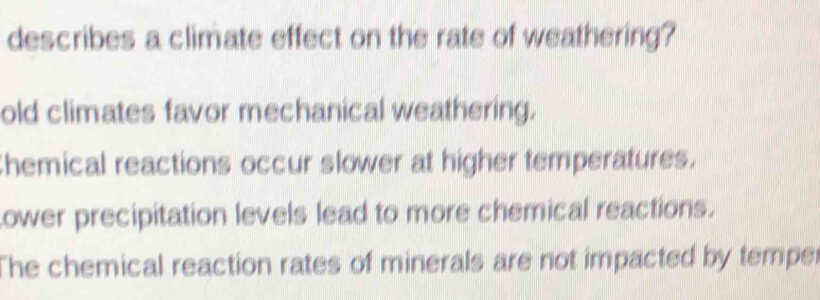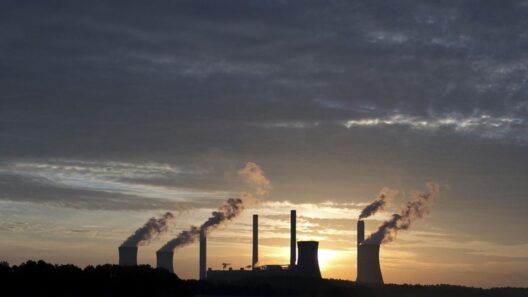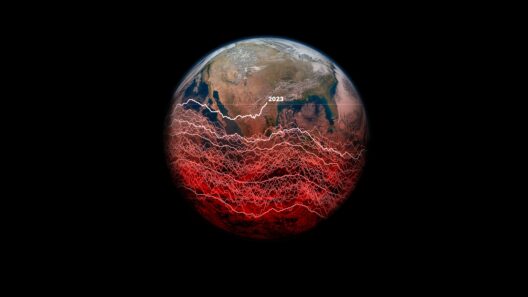Climate is a critical factor influencing the rate of weathering, a natural process that disintegrates rocks and minerals. Understanding this relationship is fundamental in appreciating the feedback loops between our environmental systems and climate change. Weathering plays a key role in shaping landscapes and contributes to soil formation, which is vital for agriculture and ecosystem health. As climate variability intensifies, particularly amid global warming, the implications for weathering processes become increasingly significant.
Climate-driven factors such as temperature fluctuations, moisture levels, and vegetation influences shed light on how weathering operates. By exploring these elements, one can grasp the broader implications for soil health, carbon cycling, and landscape evolution.
With this backdrop, one can delve into the specific mechanisms through which climate affects weathering. A careful consideration of these aspects not only enhances our scientific understanding but also addresses a crucial concern for land management and conservation strategies.
Temperature: The Catalyst of Chemical Change
Temperature plays a pivotal role in accelerating chemical weathering processes. Higher temperatures generally increase the kinetic energy of molecules, which consequently elevates the rates of chemical reactions. For instance, the weathering of silicate minerals, which are abundant in the Earth’s crust, often hinges on temperature. At elevated temperatures, the breakdown of silicates into clay minerals proceeds more rapidly, facilitating the leaching process that enriches soils with essential nutrients.
Conversely, extreme temperature fluctuations can induce freeze-thaw cycles, particularly in temperate regions. Water infiltrates cracks and pores in rock, freezing and expanding during cold periods, then contracting as temperatures rise. This physical weathering process leads to the gradual breakdown of even the toughest rock formations, contributing to soil development over time.
High temperatures also exacerbate the effects of aridity, particularly in desert regions, where chemical weathering may be slowed due to minimal moisture. Here, the balance between temperature and precipitation significantly shapes weathering rates. In some instances, high temperatures may lead to expansive salt weathering, where increasing evaporation results in the crystallization of salts within rock crevices, ultimately causing disintegration.
Moisture: The Essence of Weathering
Moisture is perhaps the most significant determinant of the weathering process. Water is a key agent in both chemical and physical weathering. It facilitates the dissolution of minerals and engages in hydrolysis reactions that transform rocks into soils. The presence of adequate moisture enhances the rates of chemical reactions, facilitating the leaching of minerals and contributing to a more fertile substrate for plant growth.
Conversely, insufficient moisture, as seen in drought-stricken areas, can markedly impede weathering processes. Without sufficient water, chemical reactions slow down, and the weathering of rocks and minerals becomes considerably limited. This creates challenges for agricultural practices and natural ecosystems reliant on healthy soils. When moisture is scarce, minerals such as calcium and potassium—which are crucial for plant health—remain bound within rocks rather than being released into the soil where they can be utilized.
In contrast, increased precipitation, especially in regions experiencing heavy rainfall, can accelerate both chemical and physical weathering. The high moisture content in these environments promotes the leaching of nutrients and minerals, enriching the soil and making it more conducive for vegetation. However, excessive rainfall can also lead to erosion, which, while a form of weathering itself, can strip away topsoil, further complicating soil health and stability.
Vegetation: The Interactive Influence
Vegetation not only affects the microclimate but also plays an integral role in weathering processes. Plants contribute to the physical breakdown of rocks through root expansion and organic acid secretion. The roots of trees and other vegetation penetrate rock crevices, exerting pressure that can fracture rocks. The organic acids produced during decomposition contribute to chemical weathering, facilitating the breakdown of minerals.
In ecosystems that are rich in biodiversity, the presence of plants enhances moisture retention in the soil, promoting further weathering. These plants create a microclimate that can affect local temperatures and humidity, further fostering chemical weathering processes. For example, forests tend to retain more moisture compared to barren landscapes, thereby enhancing weathering through both chemical reactions and physical alterations caused by root systems.
Climate Change: An Urgent Concern
As climate change intensifies, the implications for weathering processes are profound. Alterations in precipitation patterns, temperature extremes, and shifts in vegetation dynamics can radically disrupt established weathering regimes. Understanding these changes is essential for predicting future agricultural success and ecosystem stability.
Regions that become drier may experience decreased weathering rates, leading to nutrient-poor soils, while areas with increased rainfall may face accelerated weathering and subsequent erosion. Such shifts could have cascading effects on biodiversity, land management, and food security.
Conclusion: A Call for Action
The intricate relationship between climate and weathering highlights the urgent need for sustainable land management practices and climate mitigation strategies. Understanding how temperature, moisture, and vegetation interact to influence weathering can inform practices aimed at preserving soil health and ecosystem functionality. Addressing these interconnected environmental dynamics is essential for the resilience of both natural and human systems in the face of ongoing climate challenges. By fostering awareness and actionable solutions, we can ensure a more sustainable future for our planet.






